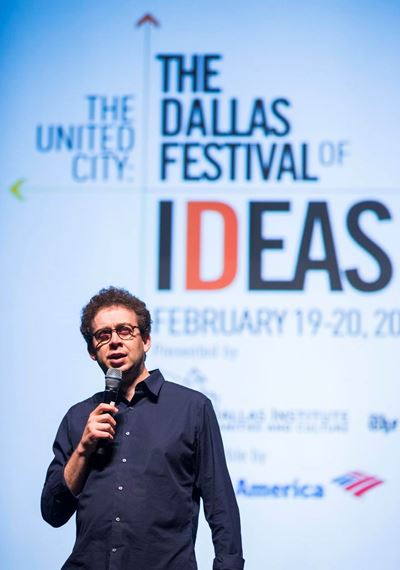Mark Lamster Awarded the Rabkin Prize by the Dorothea and Leo Rabkin Foundation
Mark Lamster, associate professor of practice, was honored by the Dorothea and Leo Rabkin Foundation as one of eight recipients of a $50,000 prize. The award is named after husband-and-wife duo, Leo and Dorothea Rabkin, who created “a landmark collection of American folk and outsider art.” Leo Rabkin was an artist who worked and exhibited in New York City for 60 years with the help of his wife, Dorothea. The foundation has awarded a collective $2.275 million to individual art writers across the country over the past five years. Lamster is the first recipient of the national award who writes principally about architecture. In The Dallas Morning News Lamster states how wonderful it is to have a “foundation supporting arts writers,” how grateful he is “beyond measure for this extraordinary support, and to be considered alongside so many other” colleagues. Christopher Wynn, The News’ Arts and Entertainment Editor described Lamster as “fearless” and was curious whether he was exploring the history of a built city or advocating for progressive urban design through Lamster’s clear, intelligent, and compassionate writing.
Lamster has gained numerous achievements and experience that has contributed to his expertise, architecture critic of The Dallas Morning News, and a Loeb Fellow at the Harvard Graduate School of Design. The Rabkin Prize provides an additional winning to Lamster’s history of major awards. Lamster was a finalist for the 2018 National Book Critics Circle Award for Biography for his acclaimed biography of Philip Johnson titled, The Man in the Glass House, and remarked as “stimulating and lively” by The New York Times. Recently, Lamster won first-place in the National Headliner Awards for his architecture columns, which is one of the oldest and most prestigious media-industry contests. The Headliners Foundation recognized Lamster with a Certificate of Merit for his story about a historic freedman’s town in “Reckoning with Joppa,” which was recalled as a “unique form of storytelling, a combination of narrative history, and journalistic investigation, and critical writing” by judges.
Lamster partnered with News visual journalist Lynda M. González in "Reckoning with Joppa." The story of Joppa reflecting on the history of race in Dallas and America. Lamster and González explore the people, problems, and promises of this unique community.
Joppa is a small, isolated neighborhood with a population of around 750 adults. Most of the time, it is calm and serene. Those who live there and those who visit think it's a beautiful location, and its relative seclusion is part of what makes it so remarkable. Joppa is within the city of Dallas but also a place apart. And For generations, Dallas has neglected this community built by emancipated slaves, and now it is facing thoroughly modern challenges.
"The Joppa Team" Diane Allen, Kate Holliday, Austin Allen, and Julia Lindgren, with help from SOM Foundation and the Dallas Regional Chamber, are making community development possible. Additionally, The South Central Civic League Joppee Neighborhood Association has provided support in bringing students, teachers, and community members together to develop, engage in, and implement art installations, design-build projects, and research studios. The South Central Civic League is still dedicated to improving the community and ensuring that the residents are cared for in the process.
Dr. Kate Holliday's preservation work at the Melissa Pierce School, a historically Black school in Joppee, sparked the beginning of these projects. And then Austin Allen studio class creating a neighborhood stabilization overlay based on the Joppee community and the Honey Springs Branch watershed.
These projects promote UTA's commitment to diversity and inclusion and build on our history of working with diverse communities throughout the Metroplex. As educators, we are committed to working with underserved communities to preserve their history and share it with future generations. We hope that our collaboration with the Joppee Neighborhood Association will inspire other students and faculty to engage in architectural history, sustainability, and environmental justice, giving them the tools they'll need to help us achieve our objective of equitable development.
Congratulations to Mark Lamster on this wonderful achievement, and very well deserved.
